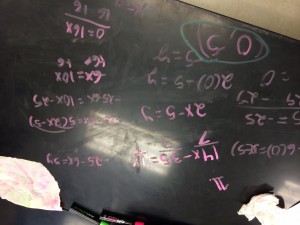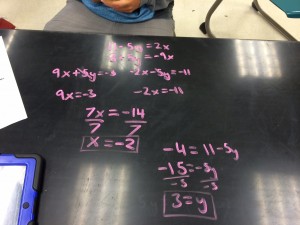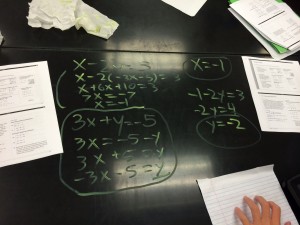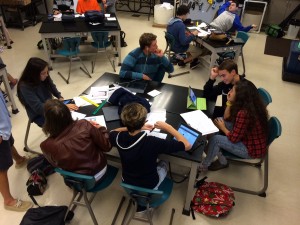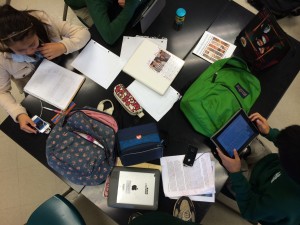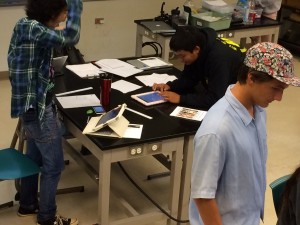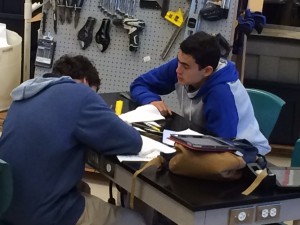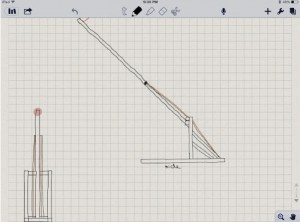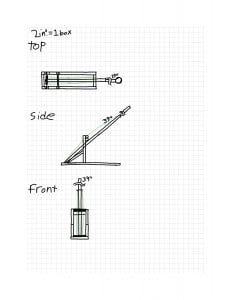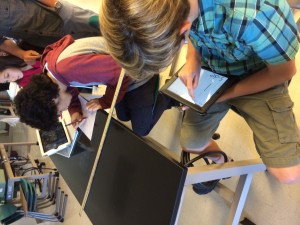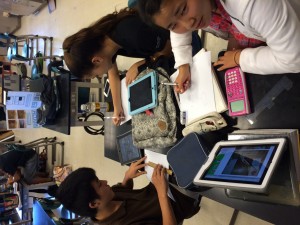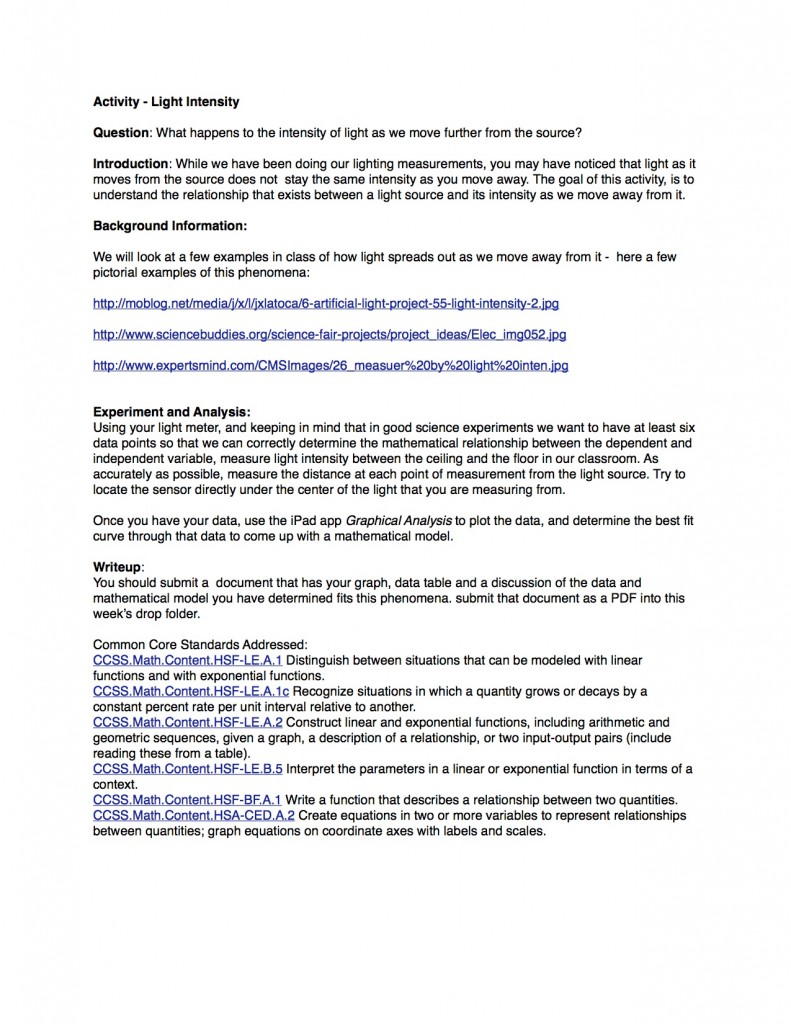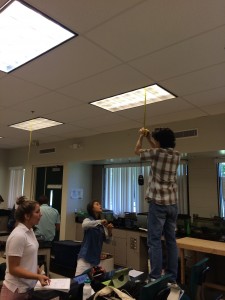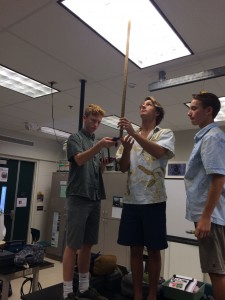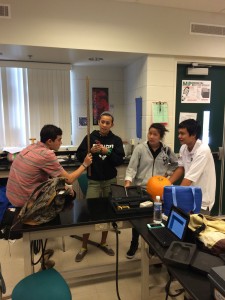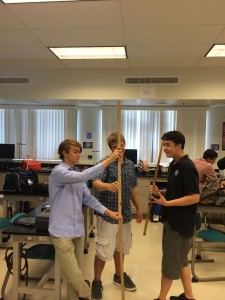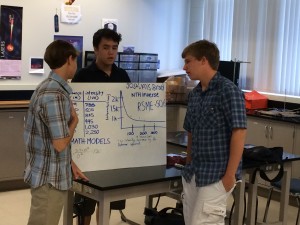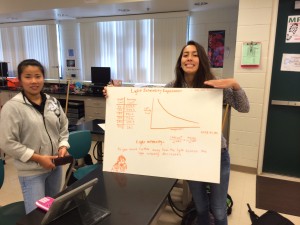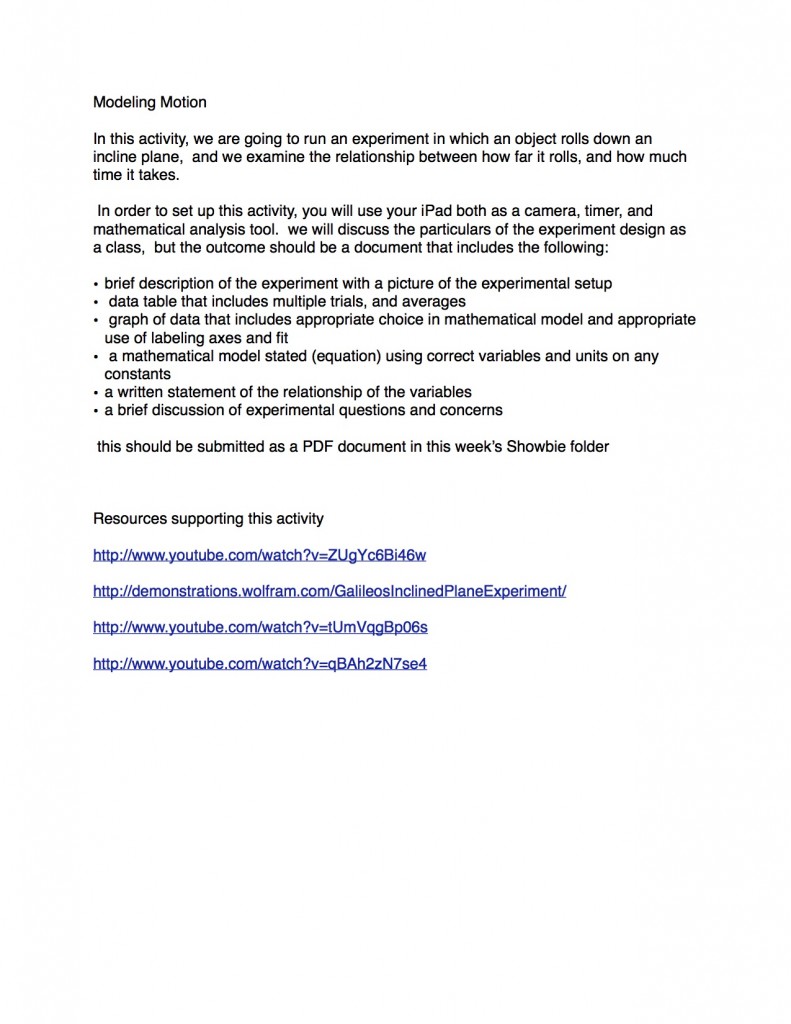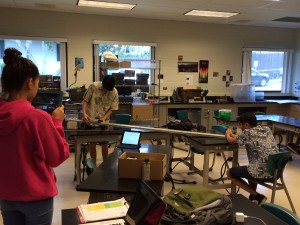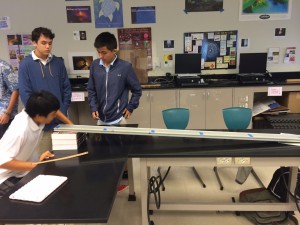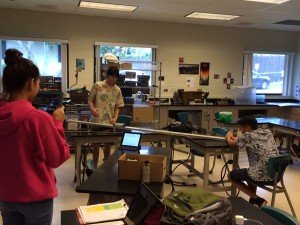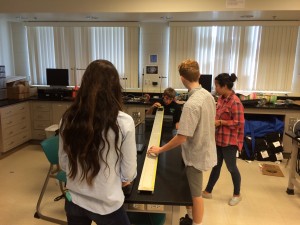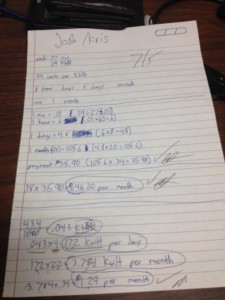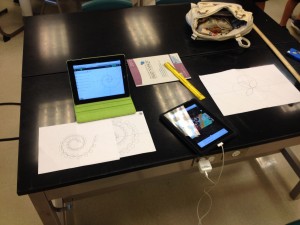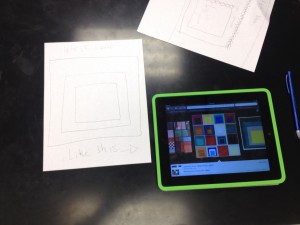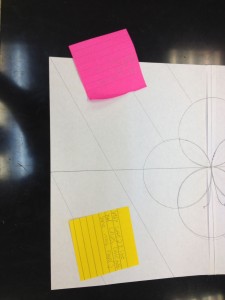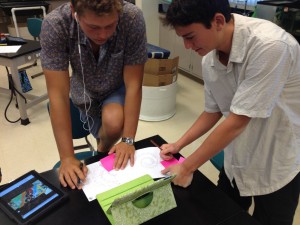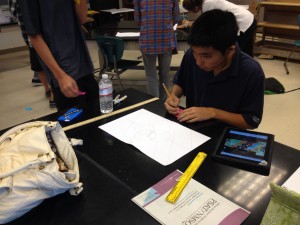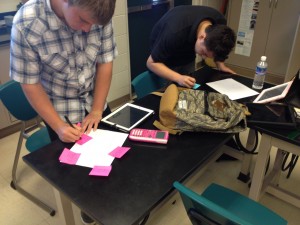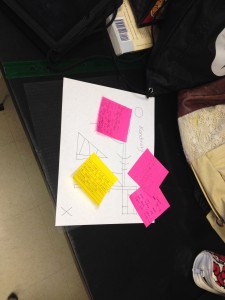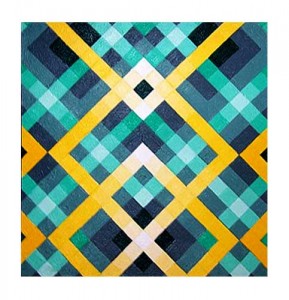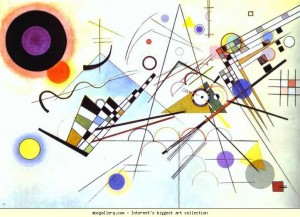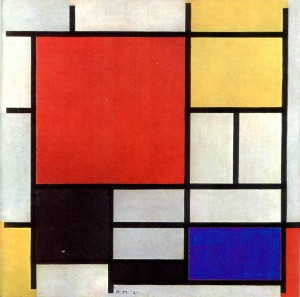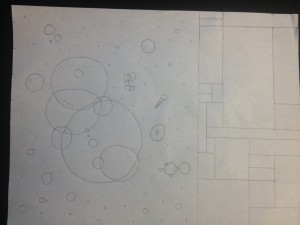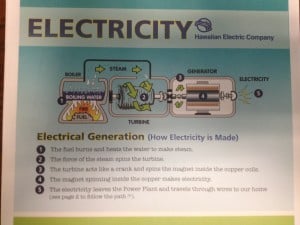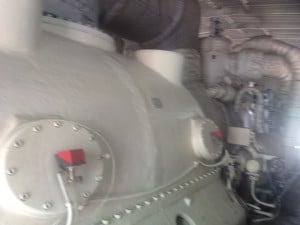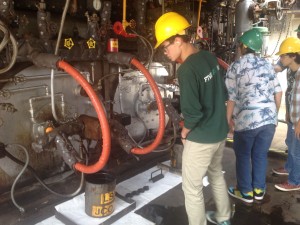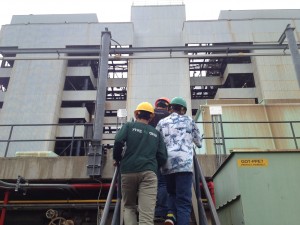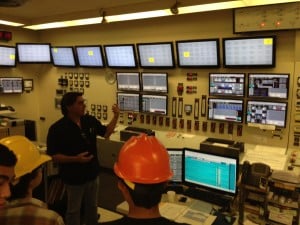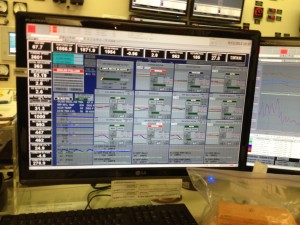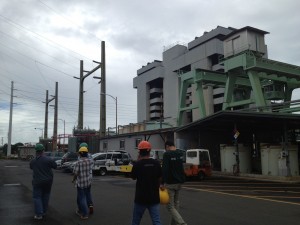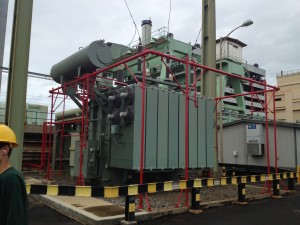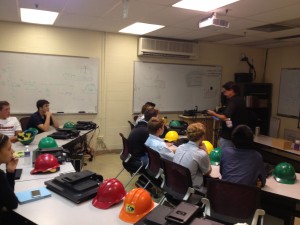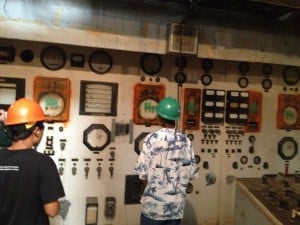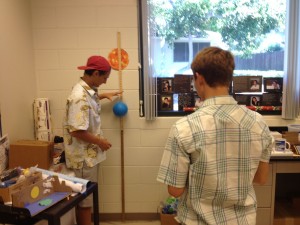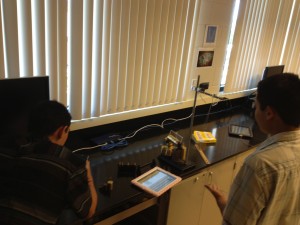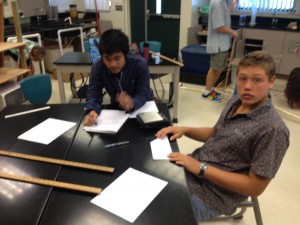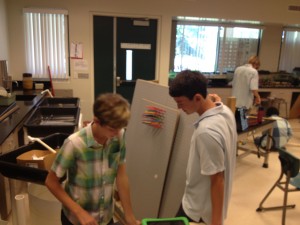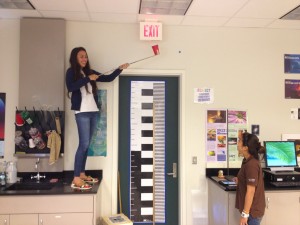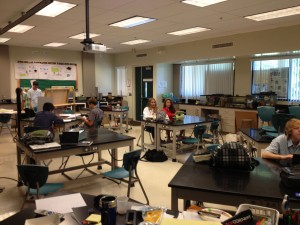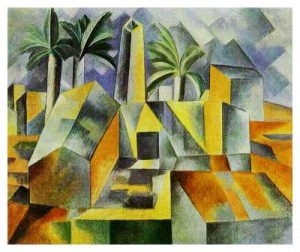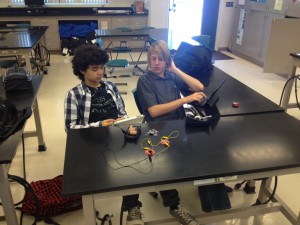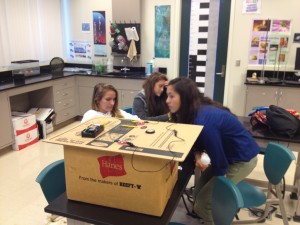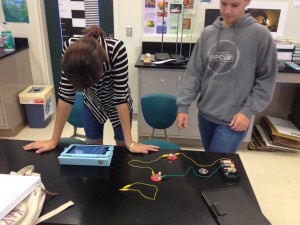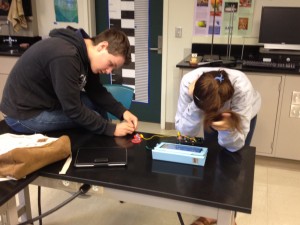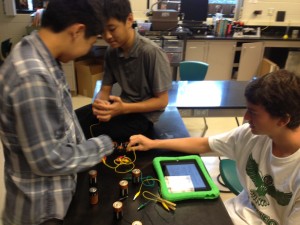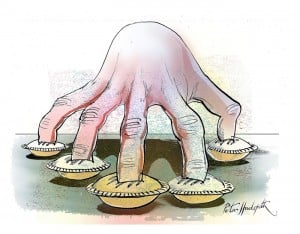Disclaimer alert: This post is more philosophical than procedural – your mileage may vary on what you get from reading this…it is more of an intellectual exploration for me…
I want to thank my son, Aukai, for letting me to reflect and talk to him about this issue to help me consider how I might write this post – he was a wonderful reflective partner and I am his debt for his time, interest and feedback. He is currently a Junior at Mid-Pacific Institute.
I spent the day on Saturday, March 1 The Hawaii Council of Math teachers annual conference (http://www.math.hawaii.edu/~tom/hctm/Speakers2014.pdf) with a few specific goals:
I gave a presentation that was titled “Hands-on, Minds-on Math – An Offering of Homegrown Math Projects and Activities“ – I was both excited and anxious about sharing the work I’ve been doing the past couple of years with my colleague Gregg on designing large and small projects and activities that incorporate mathematical thinking and concepts to real problems.
I was interested in attending other sessions to see what kinds of ways I might build my professional knowledge as a mathematics teacher
I was interested in getting connected to a network of math teachers to better my collegial connections with both our math department ( five other high school math teachers attended) as well other math teachers from the state and beyond.
As I was debriefing the experience of the day which was both rewarding and challenging, I was struck by the enthusiasm, the fervor – that our community exhibited. It’s probably no surprise to anyone that reads my blog or knows me, that I find myself particularly challenged with the more traditional ways that math is taught and learned, and how that fits into a larger picture of the ways in which we would like to see our students use math to further themselves and use it in their daily lives. In many ways, it struck me that this math meeting was like a church revival – true believers who enjoy the company of each other to reinforce and engage themselves in conversation about their excitement and belief in their faith as well as ways to improve the way they share it with their community. In a sense, the ending of the conference felt like a benediction – go forth and do good work and keep the faith. Go forth to engender in your students a knowledge of and passion of mathematically thinking.
But here is where I have a quandary. Since anyone that knows me knows that I teach math and science, I am often greeted with an apologies from people saying something like “I’m not very good at math” or “I really didn’t like math in school” much the same as someone who hasn’t been attending church might apologize to a religious friend saying I haven’t really followed through on my faith. I may be a blasphemer in saying this, but I don’t think that morality comes from just attending church or being part of a organized religion anymore that I think mathematical thinking comes solely from the traditional scope, sequence and pedagogy of math problems and content. I was raised Catholic, and if you didn’t go to confession, you felt guilty because you didn’t own up to God about your sins. In much the same way, if you did not do well in math there is a stigma of not being a mathematician, or somehow being viewed as religiously or mathematically unworthy.
( sidebar of a funny story that is relevant – was at a conference a few years ago when a mathematician about this issue shared a story of talking to a friend who was saying that they had taken German three times and failed. The person said dejectedly “there is no way that my brain could ever learn the German language”. Their friend responded “ it’s a good thing you weren’t born in Germany, then!”. Language skills and mathematical reasoning are much the same – if they are part of our culture and we are immersed in them fully, everyone can learn it. Perhaps not all equally, but certainly functionally.)
I fundamentally believe that part of being human is a brain that is mathematical. When a quarterback looks down the field to find an open receiver, they do some incredible mathematics – gauge the speed of their receiver, extrapolate what location they will be at at the right time, determine the space between that person and a defender, throw a ball with the correct arch and speed to put it in their hands accurately – and all of this done in the blink of an eye – if you had to program that mathematically, it would be incredibly complex – but isn’t that the point? They’re doing this mathematics instinctively but somehow it’s not considered ‘real’ math. After all, who says, “Tom Brady is a incredible mathematician!”
I am not trying to make the case that we should not be including mathematics education for all students in school. What I am wondering, is what that scope, sequence, pedagogy and assessment should be like and how white might at least be more inclusive to the different ways that math thinking can be both exhibited and build on success for students.
At a wonderful session I attended by Robert Kaplinsky http://robertkaplinsky.com/ he highlighted some the important ideas that come from the common core about mathematics education. The first was that proper mathematics education needs to stand on three legs equally:
* students must be fluent in operational procedures,
* students must demonstrate understanding of mathematical concepts and what they mean, and
* students must be able to apply mathematical concepts to new situations so that they can demonstrate true fluency with it.
Think of it this way: we wouldn’t teach a world language class and only test vocabulary and sentence structure – we want students to be able to explain the language, perhaps even asking them to compare and contrast the similarities to other languages. And we would want students to be able to apply the language – have a conversation, visit a country that uses that language predominantly and feel comfortable in it, be able to read and that language for meaning and pleasure.
A math teacher I knew a few years ago was talking to some higher level math students and he admitted to the students that most of mathematics education is designed to teach students to be calculators – to memorize and execute specific mathematical operations to solve specific problems. He admitted that the goal was not to make them mathematicians. The students were offended and asked why wouldn’t we design curriculum to help them be better mathematicians, and not just computers, and his response was “because you can’t handle it”. I fundamentally believe that no more than we would teach a musical instrument by having students in isolation learn scales and note positions, but never perform, or learn the rules of grammar and vocabulary and never write beyond simple prompts, we need to rethink math curriculum so that it gives students not just a chance to understand the operations and procedures that are so important, but also to put their knowledge into practice – to walk the walk, and talk the talk of true mathematicians.
I fundamentally believe all students can create art, can writes elegant creative essays, can find wonder and discover important ideas about our physical universe and can see the world as a mathematician. Perhaps they can’t do this all equally – not everyone gets to be or wants to be the quarterback. But the idea of creating mathematicians in skill, understanding, and application challenges me to keep working on the curriculum I design and the experiences that my students have in my class.
Still left unanswered in this post, is a conversation about standardized tests like the SAT. Another day…
The slides from my presentation on some of the ways I’ve tried to design relevant, rigorous and engaging curricula are in my blog post previous to this is a PDF.
Religion and faith and mathematics are a tricky business – we want everyone to appreciate, embrace and apply the wonders we see unfolded from our higher view. The real challenge is to find ways to make that happen in the lives of everyone, regardless of their leanings, capabilities and dispositions.
This post is already gotten long, and I could rant on some more, but it was the beginning of my unpacking of my thinking from the conference…my work and thinking is “To Be Continued…”

